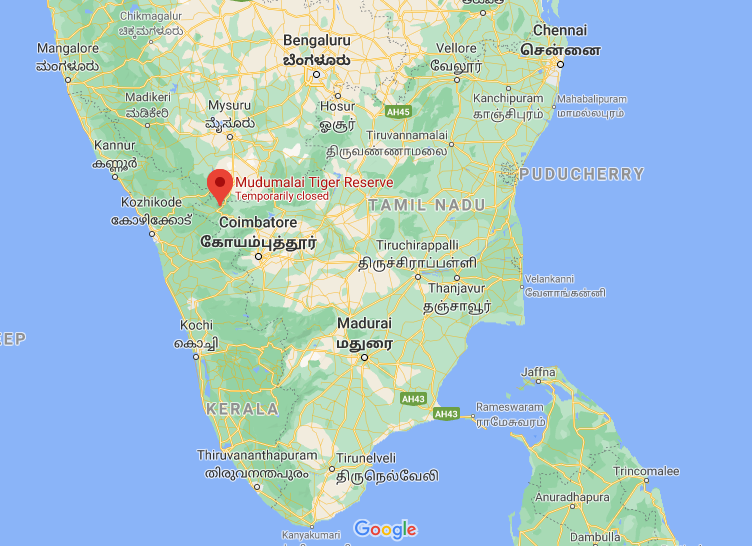MTR needs a plan for eco conservation

Mudumalai Tiger Reserve (MTR)
- It is located in the Nilgiris district of Tamil Nadu, present at the tri-juncture of Karnataka, Tamil Nadu and Kerala.
- It plays an unique role by forming part of the Nilgiris Biosphere Reserve, the first Biosphere Reserve in India, declared during 1986.
- A variety of habitat ranging from tropical evergreen forest, moist deciduous forest, moist teak forest, dry teak forest, secondary grasslands and swamps are found here.
- It has a common boundary with Wayanad Wildlife Sanctuary (Kerala) on the West and Bandipur Tiger Reserve (Karnataka) on the North,
- It is known for its flagship species like Tiger, Elephant etc.
Why in the News?
- The Supreme Court (SC) has upheld the Tamil Nadu government notification declaring the Singur plateau region of Mudumalai Tiger Reserve as Elephant Corridor.
- The court rejected the plea of resort owners against the notification.
- The elephant corridor declared now is a part of the eco-sensitive zone of MTR.
- The SC has also ordered a 3 member committee to hear claims of land and resort owners.
- But environmentalists have been consistently asking the state government to prepare a draft Zonal Master Plan (ZMP) which has not been done since 2019 when the central government declared some of MTR’s surrounding as eco-sensitive zones.
- Generally ZMPs are roadmaps to regulate the eco-sensitive zones. Hence environmentalists are asking to prepare a draft ZMP before the SC’s 3 member committee begins its work.
Eco-sensitive Zone
- Land falling within 10 kms of the boundaries of the National Parks and Wildlife Sanctuaries are called Eco-Fragile Zones or Eco-sensitive Zones.
- They are declared under the Environment Protection Act, 1986.
- The purpose of declaring Eco-sensitive Zones around National parks and Sanctuaries is to create some kind of ”Shock Absorber” for the Protected Areas. They would also act as a transition zone from areas of high protection to areas involving lesser protection.
- As has been decided by the National Board for Wildlife, the activities in the eco-sensitive zones would be of a regulatory nature rather than prohibitive nature, unless and otherwise so required.
Zonal Master Plan (ZMP)
- The ZMP is prepared with inputs from departments like the pollution control board, PWD, tourism and local bodies besides the forest department, would be a ready reckoner of types of forests, man-made structures, water bodies, agricultural land and settlements if any, and provide a road map for conservation.
References:
- https://www.mudumalaitigerreserve.com/about-us/
- https://nilgiris.nic.in/tourist-place/mudumalai-tiger-reserve/
- http://forestsclearance.nic.in/writereaddata/Addinfo/0_0_1113121612211GuidelinesforESZ.pdf
- https://timesofindia.indiatimes.com/city/chennai/mtr-needs-a-plan-for-eco-conservation/articleshow/79006787.cms
Subscribe
Login
0 Comments
